By George Selgin
Sunday, October 19, 2008
Who can forget the end of "Planet of the Apes" when Charlton Heston, kneeling before the half-buried remains of the Statue of Liberty, slams his fists into the sand and cries, "You maniacs! You blew it up! Ah, damn you ... damn you all to hell!"( I CAN'T )
Now imagine the same scene, but with a half-buried Morgan Stanley building standing in for Miss Liberty and a time-traveling Walter Bagehot playing the lead and you've got the perfect Hollywood dramatization of the real-life tragedy that, with luck, is having its denouement on Wall Street.
Bagehot? The great Victorian man of letters, best remembered today as the second and most celebrated editor of the British magazine The Economist, wasn't exactly a hunk. But he certainly could have delivered those futile last lines with real conviction, for he was among the first to recognize the vast destructive potential of that newfangled weapon of Victorian finance: the modern central bank. ( TRUE )
Bagehot first alerted readers to this potential and offered his suggestions for containing it in an article that appeared in The Economist after the great panic and credit crisis of 1866. That panic witnessed the spectacular collapse of Overend, Gurney & Co., which had long been Great Britain's premier investment house.
Bagehot understood that, during such panics, the Bank of England alone commanded the confidence needed to serve other financial firms as a "lender of last resort."( TRUE ) But as Bagehot put it later in his book "Lombard Street: A Description of the Money Market" (1873), the bank's "faltering way" -- its arbitrary and inconsistent use of its unique lending powers -- tended only to make things worse.( TRUE. WE'VE SEEN THE RESULTS OURSELVES )
"The public," Bagehot wrote, "is never sure what policy will be adopted at the most important moment: it is not sure what amount of advance will be made. ... And until we have on this point a clear understanding with the Bank of England, both our ability to avoid crises and our terror at crises will always be greater than they would otherwise be."( TRUE. THIS IS WHAT HAS BEEN HAPPENING, WHICH I CALL AN OVERREACTION OF FEAR AND AVERSION TO RISK BEYOND THE FUNDAMENTALS )
The ultimate source of trouble, Bagehot believed, was the very existence of the Bank of England and the special privileges it enjoyed. But because nothing save a revolution seemed likely to do away with the "Old Lady of Threadneedle Street," as it was called, Bagehot's preferred, practical solution was for the bank expressly to commit itself to lending freely during crises, though on good collateral only, and at "penalty" rates. ( ALL STILL TRUE )
The restrictive provisions were supposed to limit aid to otherwise solvent firms panic had rendered illiquid. ( THAT'S IT )
Bagehot's recommendation has since become a sort of master precept of central banking -- albeit one that's mainly honored in the breach by central bankers. ( TRY NEVER )
To be fair to today's central bankers, there's never been much agreement on how to apply Bagehot's rule in practice. Just what do "good collateral" and "penalty rates" mean in times like these? ( WE'D BETTER FIGURE IT OUT )
While no one might precisely be able to define good collateral -- and one can debate whether the rate at which banks offer to lend unsecured funds to other banks, known as the London Interbank Offered Rate, or LIBOR rate, plus 8 percent constitutes a "penalty" rate -- who even pretends that recent central bank lending has been based on good collateral? ( NOT ME. EXHIBIT ONE: TARP )
But rescuing insolvent firms is the least of it. The real damage comes from the Treasury's utter lack of any consistent last-resort lending rule. The recently enacted financial institutions bailout bill does little to clarify this. ( TRUE )
That's just the sort of thing that troubled Bagehot almost a century and a half ago, when central banks were still in their swaddling clothes. Yet central bankers and governments still don't get it, despite the lip service they pay to this great thinker from our past. ( TRUE )
George Selgin is a research fellow at The Independent Institute (www.independent.org) and a professor of free market thought at West Virginia University."
Fine. You can immediately see the relevance of Bagehot, and roughly from where I get my Bagehot's Principles. Here again, some of Bagehot's Principles:
1) If the Fed exists, it will be the Lender Of Last resort, and that has to be taken in to account in real world Political Economy. It should lend freely in a crisis to solvent banks.
2) The rules for LOLR( from here on down this includes any government guarantee ) intervention should be clear, public, and followed, otherwise Moral Hazard is ineffective. All guarantees must be explicit.
3) The terms must be onerous.
Here are a few others:
5) The taxpayer's interests should come first.
6) Moral Hazard needs to be constantly applied by quickly liquidating problem banks in normal times.
7) Any entity receiving a guarantee will have to be supervised or regulated effectively, and violations should be quickly and severely punished.
8) There is no doubt that any entity receiving a LOLR guarantee will need to be more conservative in its practices in order to limit the liability of the taxpayer.
9) There should be a class of financial concerns that can act more freely, but they should not receive LOLR guarantees. They will be strictly supervised or regulated though, and are subject to laws against fraud, etc.
Now, a different point of view from one of my favorite writers:
"Walter Bagehot Was Wrong
http://www.nysun.com/opinion/walter-bagehot-was-wrong/80283/
The governor of the Central Bank of Luxembourg raised some eyebrows when he questioned the integrity of the fast-growing balance sheet of the European Central Bank. Yves Mersch, a member of the ECB's governing council as well as the Ben Bernanke of the Grand Duchy of Luxembourg, raised the issue at a gathering of the International Capital Market Association in Vienna two weeks ago.
The Granger Collection, New York / Copyright � The Granger Collection, New York / The Granger Collection
BAGEHOT
Insofar as a currency derives its strength from the balance sheet of the issuing central bank, the euro is unsound and becoming more so, as Mr. Mersch did not quite say. We, however, will say it for him. In fact, we will say the same for most of the leading monetary brands, that of the United States not excluded. The mortgage mess is the immediate cause of the new debasement( PRINTING MONEY ). A long-held article of central banking dogma is the remote cause.
Mr. Mersch landed on the front page of the Financial Times by acknowledging that the ECB is accepting a dubious kind of mortgage collateral( TRUE ) in exchange for loans to the world's liquidity-parched financial institutions. In so many words, Mr. Mersch charged that the commercial banks are gaming the central bank, a situation he called of "high concern." Reading Mr. Mersch, we thought of Thomson Hankey.
Mr. Mersch has the look of a comer in world central-banking councils. Hankey, though he served a term as governor of the Bank of England in 1851 and 1852, is known today, if at all, as a sparring partner of the great Victorian Walter Bagehot (say "Badge-oat"). It was Bagehot who laid down the law that, in a credit crisis, a central bank should lend freely against good collateral at a high rate of interest. Hankey emphatically disagreed, and he answered Bagehot in a little book titled, "The Principles of Banking," first published in 1867 in the wake of the famous Overend Gurney run, the one to which the 2007 Northern Rock panic is sometimes compared.
Way back then, the Bank of England was an investor-owned institution conducting a conventional, for-profit commercial banking business. It had but one avowed public purpose, and that was to manage the workings of the international gold standard. It stood ready to exchange currency for gold coin, and gold coin for currency, at the statutory rate of �3.17s.9d. to the ounce, or �3.89 in metric terms, no questions asked.
Lender of Last Resort
For Bagehot, the Bank of England was no ordinary deposit-taking institution but the lender, or liquidity provider, of last resort. Actually, Sir Francis Baring had anticipated Bagehot in that judgment. In the crisis year of 1797, Baring had fixed the Bank with the name, "le dernier resort." Neither Bagehot nor Baring seemed to anticipate that, before many hundreds of years would pass, the Bank � indeed, many central banks � would become, so to speak, "le premier resort." ( VERY TRUE. THAT'S WHAT WE HAVE NOW )Anyone with good collateral should expect to find accommodation at the Bank's discount window at a suitably high penalty rate( ONEROUS ), Bagehot said. What passed for good banking collateral in the mid-19th century were bills of exchange, i.e., short-dated, self-liquidating IOUs. Mortgages, inherently illiquid, were inadmissible. Hankey liked to quote a relative of his, one C. Poulett Thomson, on the art of banking. It wasn't very hard, said Thomson, as long as the banker "would only learn the difference between a Mortgage and a Bill of Exchange."
By now, a busy reader of Grant's Interest Rate Observer might be wondering why the editor is reaching back to 1867 for actionable ideas on the 21st-century monetary situation. Medical science has made a certain amount of progress since Dr. Strickland's Pile Remedy, Constitution Life Syrup, and Webster's Vegetable Hair Invigorator represented state-of-the-art therapeutics. Neither has monetary economics stood still � has it?
You be the judge. Hankey, in a losing cause, marshaled two principal arguments against the Bagehot doctrine. No. 1, moral hazard: Let profit-maximizing people come to believe that the Bank of England will bail them out, and they themselves will take the risks, and pile on the leverage, that will require them to be bailed out( I BELIEVE THAT THIS IS THE MAIN CAUSE OF OUR CURRENT CRISIS ). No. 2, simple fairness: If Britain's banking interest can claim a right to the accommodation of the Bank of England, why shouldn't the shipping interest, the construction interest, the railroads, "and, last of all, the much-maligned agricultural interest," do the same? Shouldn't all economic actors "be equally entitled to benefit by any favors for which the public have a right to look from such an institution as the Bank of England( NO. THEY CAN PETITION THE GOVERNMENT )?"
At this writing, the Federal Reserve, the ECB, and the Bank of England are taking extraordinary measures to accommodate the demand for liquidity from the institutions that couldn't seem "to learn the difference between a Mortgage and a Bill of Exchange," or between a triple-A corporate bond and a triple-A mortgage, which is a slightly different kind of confusion( TRUE. BUT I CONTEND THAT THEY DID REALLY KNOW THAT THEY WERE DOING ).
To bail out these slow learners( I DISAGREE. THEY UNDERSTOOD THE SYSTEM. EXHIBIT ONE: THE CURRENT BAILOUT ), the central banks are lending government securities against the inherently illiquid mortgage collateral that never had a place on the balance sheet of a properly run monetary institution in the first place( I AGREE. WE DON'T NEED GLASS TO UNDERSTAND GOOD BANKING ). In fact, in Hankey's day, it was a breach of good form( WE NEED MORE OF IT CHUM ) for a central bank even to acquire government securities (the preferred assets were commercial loans, foreign exchange, and gold). How far the world has come: Gold, the most liquid of monetary assets, today is officially demonetized, whereas mortgages, the least liquid of banking assets, are now � all of a sudden, because there seems to be no choice � being embraced, or, at least, tolerated. Certainly, they are being monetized ( BUT GOLD COULD BE AS WELL ).
"Ready money," writes Hankey in a passage on liquidity that seems to speak directly to the post-Bear Stearns world of 2008, "is a most valuable thing, and cannot from its very essence bear interest; every one is therefore constantly endeavoring to make it profitable and at the same time to retain its use as ready money, which is simply impossible( YOU CAN HAVE SHORT TERMS, AND LOANS TO TIDE YOU OVER ). Turn it into whatever shape you please, it can never be made into more real capital than is due to its own intrinsic value, and it is the constant attempt to perform this miracle which leads to all sorts of confusion with respect to credit. The Bank of England has long been expected to assist in performing this miracle; and it is the attempt to force the Bank to do so which has led to the greater number of the difficulties which have occurred on every occasion of monetary panics during the last twenty years."
History Chooses Bagehot
So Hankey would have every banker, trader, merchant, and speculator watch out for himself, proceed with prudence, not overreach, not overborrow, and � above all � not depend on the Bank of England for emergency accommodation if he got into a jam( GOOD LUCK. I DON'T SEE THIS FOR BANKS, BUT I DO SEE IT FOR OTHER FINANCIAL CONCERNS. PERHAPS WE DO NEED GLASS TO PUT THIS DIFFERENCE INTO LAW. ALSO, STRICTLY SPEAKING, BAGEHOT DIDN'T DISAGREE WITH THIS. I AM A TIMID BELIEVER IN CENTRAL BANKS AND THE LSOR CONCEPT )About 150 years later, Northern Rock and the Bank of England are both arms of the British government (the Bank joined the public sector in 1946). The Bank has just rolled out its Special Liquidity Scheme to exchange the government's gilts for the private sector's mortgages, and the gold price, expressed in sterling, stands at �468.2 an ounce, up from �3.89 in Hankey's time. From 1867 to date, the annual rate of debasement( I THINK GRANT LIKES THIS TERM'S MORAL CONNOTATIONS ), sterling against gold, comes to 3.3%.
Hankey's ideas did not go down to defeat for no reason. The gold standard was as hard as it was clean. When the price level fell, as it did in the final quarter of the 19th century, it just fell. No gold-standard central bank resisted the trend with newly created credit (as every major central bank does, or would do, today). A certain kind of person � Grant's knows the type � takes it to be a good thing that, under the monetary arrangements of Hankey's day, no monetary policy committee fixed interest rates or sized up the money supply or regulated the price level or supervised a return to macroeconomic equilibrium when imbalances appeared. Rather, as Hankey observed, interest rates moved and macroeconomic adjustments took place, more or less spontaneously. No government commanded them. ( THEORETICALLY, I AGREE. BUT'S IT'S NOT POSSIBLE )
To judge by all that has happened since the gold standard bit the dust, we would have to say that the people have registered their collective preference for the comforting sight of a Bernanke or a Mersch at the helm of a central bank. There is something pleasing to many, or to most, about a government functionary taking responsibility for interest rates( THEY DON'T TRUST BANKERS. CAN YOU BLAME THEM ? ), the price level and/or the labor market, whether or not that individual can actually make the magic demanded of him (we are sure he or she cannot).
Nowadays, the consensus of belief has it that America fills the bill of a "market-based system," whereas Europe is closer to a "bank-based system." But the truth is that the worldwide mortgage mess has pushed America away from markets and Europe away from banks. Both systems are moving closer to a state of government or central-bank control. And both the dollar and the euro are, therefore, moving even further away from an orthodox notion of soundness (not that either was within hailing distance of it before the credit clouds rolled in last summer)( WE'VE A HYBRID SYSTEM. IT'S SIMPLY REBALANCING ITSELF IN WAYS THAT WE DON'T APPROVE OF. BUT WE'LL SURVIVE ).
A Grand Comeuppance
In the United States this election year, the galloping socialization( NOT TRUE ) of the mortgage market proceeds with hardly a peep of discussion, let alone protest. Thus, mortgage originations by the government-sponsored enterprises reached 81% of overall originations in the fourth quarter of 2007, up from 37% in the second quarter of 2006. In the first quarter of this year, Fannie copped a 50% share of originations, double its take in calendar 2006. But in comparison to the biggest GSE, Fannie and Freddie might as well be standing still.In Boston, before a Mortgage Bankers Association audience on May 6, the chairman of the Federal Housing Finance Board, Ronald Rosenfeld, noted that the Federal Home Loan Banks, which his agency supervises, are closing in on $1 trillion in outstanding loans, or "advances" ($925 billion currently are outstanding, up by $300 billion since last June). "The FHLBs," Reuters reported of Mr. Rosenfeld's remarks, "are facing increased risk due to the concentration of loans to big financial institutions that recently 'decided to become very involved in the FHLB system,' Mr. Rosenfeld said. Those banks include Countrywide, Washington Mutual Inc.( THOSE TWO AREN'T GOOD NAMES ) and Wells Fargo & Co., he said. The top borrowers of the FHLB system account for 37% of all advances, he said. 'That's an astonishing number, and an astonishing amount of concentration,' he said. ( A BAD IDEA )
"The FHLBs can continue to provide money for their commercial bank members as long as demand persists in the market for agency debt." Foreign central banks can't seem to get their fill( THEY DID GET THEIR FILL OF AGENCIES ). In the 12 months through March, according to a recent Home Loan Bank slide show, central banks took down 40% of the system's debt issuance. Russia's central bank has shown a particularly hearty appetite for the GSEs' emissions: 21% of Russian monetary reserves are parked in the obligations of Fannie, Freddie, and the Home Loan Banks, according to a May 19 Bloomberg report.
Taking an evolutionary view of present-day monetary disturbances, we see a kind of grand comeuppance( WE'VE HAD IT ). Embracing Bagehot and rejecting Hankey, central bankers have pushed aside the classical doctrines of liquidity. In the way that financial ideas seem always to be carried to an extreme( TRUE ), they have pushed too hard. Under their noses, the global credit apparatus froze up, and now it falls to them to thaw it out. A measure of the difficulty of that work is the huge volume of lending that the Bank of England and the ECB, especially, have chosen to undertake; over the past 12 months, the balance sheets of the ECB and the Bank of England have grown by 21% and 19.4%, respectively. (In comparison, the Fed is a model of restraint.)
In his critique of the Bagehot doctrine, Hankey understandably failed to foresee how the financial engineers of the future would respond to the opportunities presented to them by ambulance-chasing central banks of the 21st century. According to the Financial Times, investment bankers the world over are bundling up mortgages to deposit in the special liquidity facilities created by the ECB and the Bank of England. "The Bank of England," the paper reported on May 16, "recently created a facility for UK banks to access funding for mortgages and the Financial Times has learnt that almost �90 billion ($175 billion) worth of bonds are being created to be placed there � almost twice the �50 billion initially expected when the scheme was launched only three weeks ago. ...
"Investment bankers who work in securitization," the FT went on, "say that their main business is structuring bonds that are eligible for ECB liquidity operations. Some analysts have concerns about whether the bonds being created will ever be saleable if markets recover( YES )."
We believe that more analysts ought to be concerned about the risk that these monetary exertions will result in a new cycle of currency debasement. For ourselves, we expect it. A brilliant man was Walter Bagehot, but Hankey had the foresight."
I would say that Bagehot was more realistic. However, the solution to our crisis is to return to Bagehot, with Hankey's views as our conscience. Again, Grant doesn't give Bagehot his due. I'm not so sure that he would have disagreed with Hankey but for Bagehot's Principle:
If the B of E exists, then it will be the LOLR, and that real life fact needs to be taken into account in your policies.
Since the B of E exists, Bagehot is really the person we must turn to.









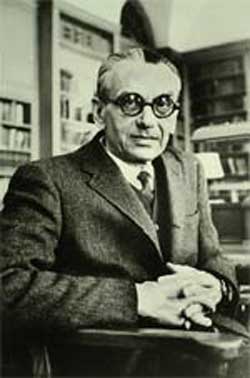















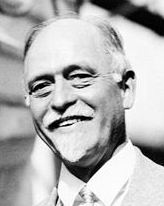



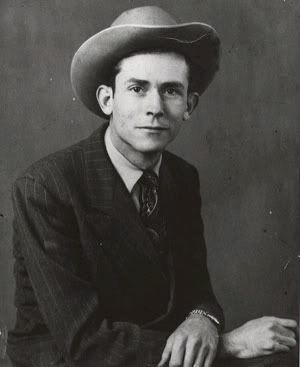





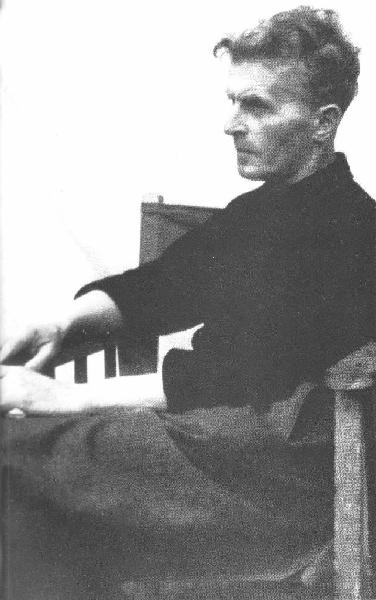

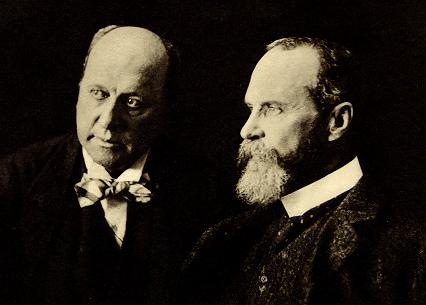


2 comments:
Free enterprise is a simple process. An owner grows or makes something and adds a margin over costs to enjoy a decent living from their efforts and the workers they used in the venture.
Something different happens when a free market takes control where economies are based on making money on money instead of making things.
The tangible values of workers and labor are deflated with this asset really acting as one of the last money standard that back paper money.
The current money crisis shows what happens when the value of labor and workers are devalued. The money on money economies hit a wall.
There is also this thing called human nature and its place in fermenting the common good. This part of the equation is a philosophical and religious problem too. See http://www.therationale.com and http://tapsearchnewsmobile.filetap.com
Tapsearcher, Thanks for your comment. I have a number of questions:
1) What's a process?
2) What does ownership entail?
3) What does "making things" mean?
4) Is money not a thing? If not, what is it?
5) What's an economy?
6) How can it be taken over?
7) What does "tangible" mean? Is it a synonym for "physical" ?
8) Is labor devalued by being paid less or is it a moral concept ?
9) What's human nature? Does "thing" here mean the same as it does in "making things"?
10) How does one determine the "common good"? Is it a utilitarian concept?
I would have others as well. I'll look at the sites you recommend.
Take care,
Don
Post a Comment